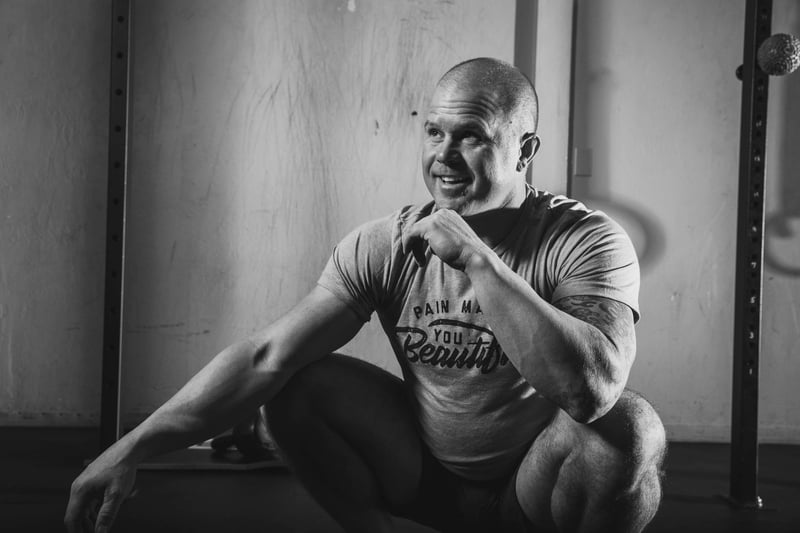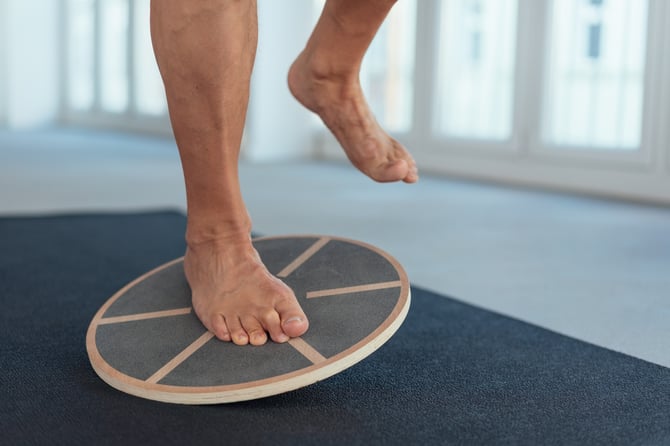
In this week’s Q&A, we interviewed Dr. Kelly Starrett, physical therapist, author, speaker and coach. Kelly is a 2x NYT Best Selling author, and his book, “Becoming a Supple Leopard” has sold over half a million copies. He is a co-founder, with his wife Juliet Starrett, of The Ready State.
Sparta Science: With the abundance of technology and wearables available to everyone today it’s easy to be confused about what will actually help. You are speaking about “Owning Your Health” at our Silicon Valley Health and Performance Summit this year. How do you think the average person can use data or diagnose themselves to improve the way they move and feel every day? Are assessments necessary?
Kelly Starrett: Let’s start with the idea that the human being (brain and physiology) is the most complicated structure in the known universe, period. The human nervous system is very sensitive and also very tolerant – so we can get away with a lot of strange behavior. Sometimes we don’t appreciate some of the outputs or expressions of the system that aren’t really healthy have actually been decades in the making.
"Let’s start with the idea that the human being (brain and physiology) is the most complicated structure in the known universe, period." - Kelly Starrett
Techs’ goal is to bring consciousness or awareness of our behaviors. The most powerful tech always illuminates true behavior change. Does it raise consciousness to behavior, and can I modify what I’m doing to increase a positive result? The goal shouldn’t be to get away from “assessments” daily, but to have more of a test-retest approach that will show how the system is working that day to where we can have something that’s observable, measurable, and repeatable.
Sparta: In recent years, there has been a rise in data use amongst physical therapists. How can PTs benefit from the use of data and the individuals they work with?
KS: It is difficult to say that we can actually prevent injury. Injury is multifactorial, and pain as such is a complicated, subjective experience, but what I can focus on is better biomotor output behavior. If I can get a better organization of the system, that will always result in net improvements in motor behavior and output.
"Better movement expression creates a more robust system. What I can control as a physio is better movement expression, and when I can objectively measure that we have something special." - Kelly Starrett
That means I can focus on getting people in better positions to produce force more efficiently, and if we can track that, it turns out those things run in parallel to those in injury and pain. Better movement expression creates a more robust system. What I can control as a coach or physio is better movement expression and when I can objectively measure that we have something special.
Sparta: Moving better without pain shouldn’t be something that’s only a concern within elite populations. Pain affects more than half of the population on any given day. What are some simple action steps for those who start to feel pain?
KS: First off, you are not fragile – you are the opposite of that. Your system is designed to be 110 years old, and it gets stronger with loading – it’s incredible – so don’t freak out. Pain does not mean you’re injured – it’s an important piece of information, but it’s a lagging indicator. People have come to fear pain, but fail to understand it’s a piece of information about the system (overuse, mechanics, etc.).
At The Ready State, we define injury as “I can’t occupy my role in society/team/job” where I have a clear injury and everything else is just an incident-level problem, but when I have pain, I want to have some simple tools to help feel better. De-sensitizing the tissues so that the brain doesn’t recognize it as a problem, or even going for a walk can help to manage pain – but at the end of the day, the body is telling us that we have something incomplete in the body and it needs to be addressed.
Sparta: We are big believers that everything starts at the ground. How you interact with the ground dictates everything up the chain. How much of a priority are the feet, and what tips do you have to keep them functioning at a high level?
KS: The foot is such an extraordinary system, and as the Russians would say, “You’re only as old as your feet.” In our movement training, we obsess about foot mechanics/position because we know that you can hide a lot of dysfunction if you have excellent ankles and feet – and when they are stiff, your movement choices disappear quickly. Be as barefoot as you can as often as you can. Upregulating your foot function will upregulate how your body will perceive itself in space which will provide more movement options and more movement solutions when needed.

What’s notable is that all of the best coaches/therapists I know eventually all become foot-obsessed for a reason, and that’s because we see it as such a limiting factor to force production. Make a commitment to walk around barefoot more often and get off of constant flat surfaces and shoes (aka sensory deprivation chambers). Strong feet are the limiting factor, and when we focus on foot capacity, we see positive reverb up the entire chain.
Sparta: Early specialization takes a lot of the blame for injuries that occur in younger athletes. You have two daughters who are involved in athletics. What tips do you have for our youth in regard to staying healthy?
KS: The generation of parents right now came up in an age where the goal was to play more. We played all the sports and were active much as we could – and without access to movement prep or strength and conditioning. Now we are seeing that “movement fluency” is much lower in kids today and many are lacking basic movement skills. Basically, they are trying to overlay complex motor skills and function on top of poorly developed general systems. Hanging, breathing, and crawling – kids lack these basic fundamentals. The reality is that kids today are going to be more specialized now more than ever.
Getting kids more into strength and conditioning early is key because it's just as much about coordination training (and providing more quality input) as it is strength and conditioning. There’s never a season you need to take off from good training and/or coordination training. Concurrent movement practice while in sports will fill in the gaps of movement literacy/coordination in a more formal system to keep kids right. We want to encourage more play/exposure to different learning opportunities. If you specialize in math from 5th grade on how will your other subjects look? We have to look at movement learning in the same light as any other cognitive skill. Ultimately, we need to make the case that diversity breeds better success, and we should not fear specializing because we will get injured, but because it makes worse athletes!”
Sparta: The “go hard or go home” mantra has evolved into “recovery being the new training.” Most people don’t have access to floating, cryotherapy, or massage. What are simple things people can do to improve their recovery habits?
KS: The reason we train is to provide a stimulus that causes an adaptation response. Training makes me weaker (and slower), but it’s my body’s reaction to that training that I desire.